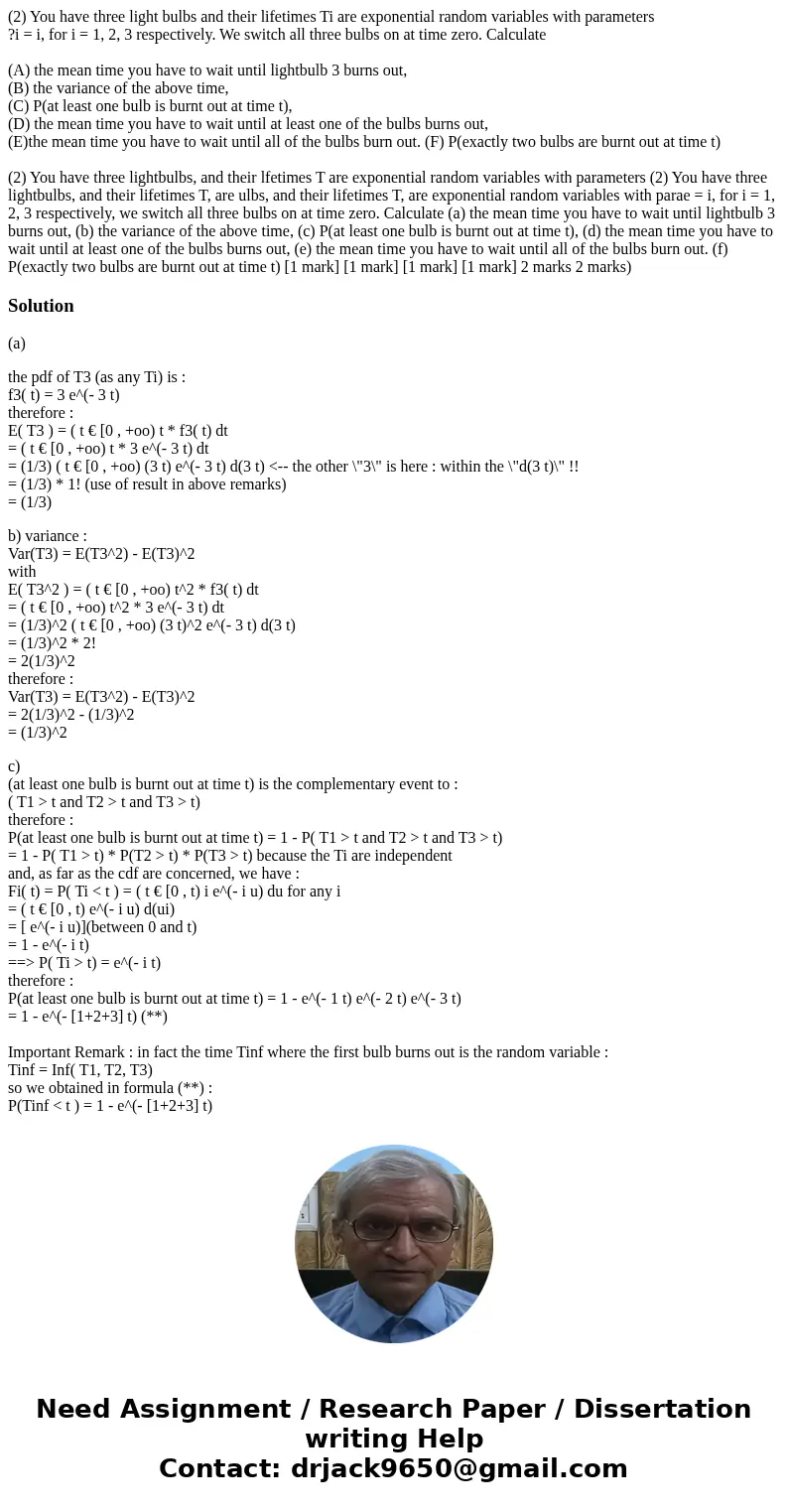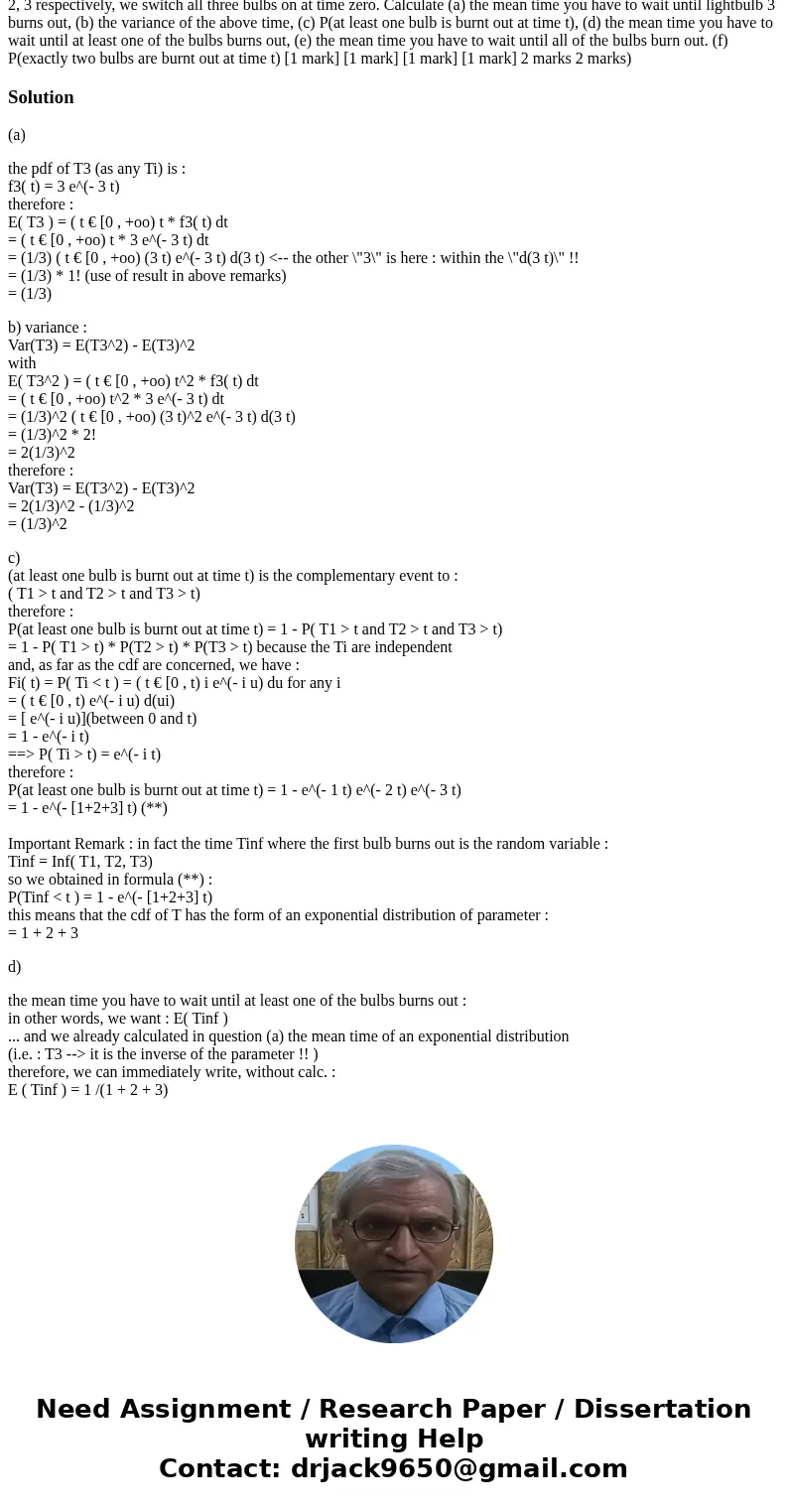2 You have three light bulbs and their lifetimes Ti are expo
Solution
(a)
the pdf of T3 (as any Ti) is :
f3( t) = 3 e^(- 3 t)
therefore :
E( T3 ) = ( t € [0 , +oo) t * f3( t) dt
= ( t € [0 , +oo) t * 3 e^(- 3 t) dt
= (1/3) ( t € [0 , +oo) (3 t) e^(- 3 t) d(3 t) <-- the other \"3\" is here : within the \"d(3 t)\" !!
= (1/3) * 1! (use of result in above remarks)
= (1/3)
b) variance :
Var(T3) = E(T3^2) - E(T3)^2
with
E( T3^2 ) = ( t € [0 , +oo) t^2 * f3( t) dt
= ( t € [0 , +oo) t^2 * 3 e^(- 3 t) dt
= (1/3)^2 ( t € [0 , +oo) (3 t)^2 e^(- 3 t) d(3 t)
= (1/3)^2 * 2!
= 2(1/3)^2
therefore :
Var(T3) = E(T3^2) - E(T3)^2
= 2(1/3)^2 - (1/3)^2
= (1/3)^2
c)
(at least one bulb is burnt out at time t) is the complementary event to :
( T1 > t and T2 > t and T3 > t)
therefore :
P(at least one bulb is burnt out at time t) = 1 - P( T1 > t and T2 > t and T3 > t)
= 1 - P( T1 > t) * P(T2 > t) * P(T3 > t) because the Ti are independent
and, as far as the cdf are concerned, we have :
Fi( t) = P( Ti < t ) = ( t € [0 , t) i e^(- i u) du for any i
= ( t € [0 , t) e^(- i u) d(ui)
= [ e^(- i u)](between 0 and t)
= 1 - e^(- i t)
==> P( Ti > t) = e^(- i t)
therefore :
P(at least one bulb is burnt out at time t) = 1 - e^(- 1 t) e^(- 2 t) e^(- 3 t)
= 1 - e^(- [1+2+3] t) (**)
Important Remark : in fact the time Tinf where the first bulb burns out is the random variable :
Tinf = Inf( T1, T2, T3)
so we obtained in formula (**) :
P(Tinf < t ) = 1 - e^(- [1+2+3] t)
this means that the cdf of T has the form of an exponential distribution of parameter :
= 1 + 2 + 3
d)
the mean time you have to wait until at least one of the bulbs burns out :
in other words, we want : E( Tinf )
... and we already calculated in question (a) the mean time of an exponential distribution
(i.e. : T3 --> it is the inverse of the parameter !! )
therefore, we can immediately write, without calc. :
E ( Tinf ) = 1 /(1 + 2 + 3)


 Homework Sourse
Homework Sourse